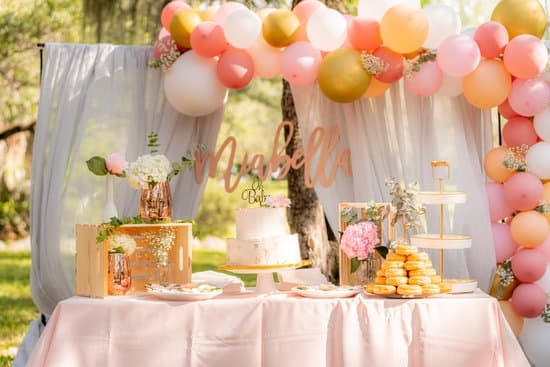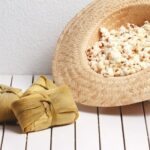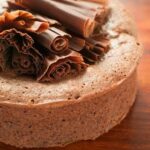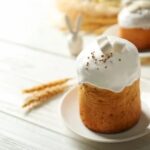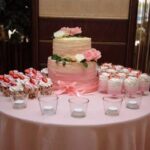Cake decorating is a creative and rewarding skill that allows individuals to turn simple cakes into stunning works of art. In this article, we will explore the intricacies of cake decoration and provide insights on how to practice decorating cakes effectively. From selecting the right tools and ingredients to mastering basic and advanced techniques, there are numerous aspects to consider when honing your cake decorating skills.
Whether you are a beginner looking to enhance your abilities or an experienced baker seeking new challenges, practice is key in the world of cake decoration. The more you practice, the more comfortable and confident you will become in creating beautiful designs on your cakes. By dedicating time and effort to practicing various techniques, you can refine your skills and take your cake decorating game to the next level.
As we delve into the importance of practice in cake decorating, we will also explore essential tools needed for effective practice sessions. Additionally, we will discuss how selecting the right ingredients plays a crucial role in achieving successful cake decorations. By understanding these foundational elements, you can set yourself up for success as you embark on your journey of mastering the art of cake decorating.
Importance of Practice in Cake Decorating
Practicing cake decorating is essential for anyone looking to hone their skills in creating beautiful and delicious treats. Just like any other art form, mastering the craft of cake decorating takes time, patience, and plenty of practice. Whether you are a beginner looking to improve your basic skills or an experienced baker aiming to learn advanced techniques, regular practice is key to perfecting your craft.
To effectively practice cake decorating, it is important to have the right tools at your disposal. Investing in quality equipment can make a significant difference in the outcome of your creations. Some essential tools for cake decorating practice include piping bags and tips, offset spatulas, turntables, and stencils. With the right tools in hand, you can easily experiment with different techniques and designs while practicing your decorating skills.
In addition to having the right tools, selecting the correct ingredients is crucial when practicing cake decorating. Using high-quality ingredients will not only enhance the flavor of your cakes but also make them easier to work with during the decoration process.
Whether you are making buttercream frosting or fondant decorations, using fresh and premium ingredients will ensure that your creations turn out beautifully. By paying attention to both tools and ingredients, you can set yourself up for success as you practice how to decorate cakes.
- Practice piping different designs on a sheet of parchment paper before applying them to a cake
- Experiment with different types of frosting such as buttercream, royal icing, or fondant
- Create simple decorations like rosettes, swirls, or dots to build your confidence
Essential Tools for Cake Decorating Practice
To become proficient in cake decorating, it is crucial to have the right tools at your disposal. Whether you are a novice or an experienced baker looking to enhance your skills, having the essential tools for cake decorating practice can make a significant difference in the outcome of your creations. Here are some must-have tools that every aspiring cake decorator should have in their arsenal:
- Piping bags: Essential for creating intricate designs and frosting details on cakes.
- Piping tips: Different tips can create various designs, such as stars, shells, and flowers.
- Offset spatula: Perfect for smoothing frosting and spreading it evenly on cakes.
- Turntable: A revolving platform that makes it easier to decorate cakes from all angles.
- Bench scraper: Ideal for achieving straight edges and smooth surfaces on cakes.
- Fondant tools: Including rolling pins, cutters, and shaping tools for working with fondant decorations.
Having these essential tools will not only make the cake decorating process more efficient but also allow you to explore different techniques and styles. Investing in high-quality tools will help you achieve professional-looking results when practicing how to decorate cakes.
Remember that practice is key when it comes to mastering the art of cake decorating. Experimenting with different tools and techniques will help you develop your skills and creativity. Additionally, watching tutorials online or taking classes can provide valuable insights and inspiration for your cake decorating journey. With dedication and patience, you can hone your craft and create stunning cakes that will impress everyone who sees them.
Selecting the Right Ingredients for Cake Decorating
When it comes to cake decorating, selecting the right ingredients is key to creating beautiful and delicious creations. From the type of flour used in the cake batter to the quality of the buttercream frosting, every ingredient plays a crucial role in the final outcome. Here are some tips on how to choose the right ingredients for your cake decorating practice.
First and foremost, ensure that you are using high-quality ingredients. This includes using fresh eggs, real butter, and pure extracts for flavoring. Using cheap or low-quality ingredients can affect the taste and texture of your cakes, making it harder to practice decorating. Invest in good quality ingredients to achieve professional results.
Another important factor to consider when selecting ingredients for cake decorating is the type of coloring and flavoring agents you use. Whether you prefer gel food colors for vibrant hues or natural extracts for subtle flavors, make sure you are using products specifically designed for baking and decorating purposes. This will ensure that your colors are bright and your flavors are intense without altering the consistency of your batters or frostings.
Finally, don’t forget about fillings and toppings when selecting ingredients for cake decorating practice. Whether you prefer fruit preserves, chocolate ganache, or whipped cream as fillings between cake layers, choose options that complement your chosen flavors and textures.
Similarly, choose toppings like fresh fruits, edible flowers, or sprinkles that add visual interest and contrast to your finished creations. By carefully selecting every ingredient that goes into your cakes, you’ll be able to hone your skills in cake decoration effectively.
Basic Techniques for Cake Decoration
Decorating cakes is a form of art that involves transforming a plain cake into a beautiful masterpiece. Basic techniques are essential to learn before moving on to more advanced decorations. These simple techniques can help you create stunning cakes for any occasion, whether it’s a birthday, wedding, or any other special event.
Buttercream Frosting
One of the most common ways to decorate a cake is with buttercream frosting. Learning how to properly apply and manipulate buttercream can make a huge difference in the overall look of your cake. Practice piping different designs such as rosettes, borders, and swirls to enhance the appearance of your cakes.
Fondant Art
Fondant is another popular choice for decorating cakes due to its smooth and polished finish. Roll out fondant and cover your cake with it for a clean canvas that you can further embellish with sculpted figures, flowers, or intricate patterns. Practice working with fondant to perfect your technique and achieve professional-looking results.
Color Mixing
Understanding color theory is crucial when it comes to decorating cakes. Experiment with mixing different food coloring gels to achieve various shades and hues for your designs. Practice blending colors seamlessly or creating ombre effects on your cakes to elevate their visual appeal. Mastering color mixing will give you more creative freedom when decorating cakes.
By mastering these basic techniques and practicing consistently, you can enhance your cake decorating skills and create stunning desserts that will leave a lasting impression on your friends and family. So grab your tools, select the right ingredients, and start experimenting with different designs to become a skilled cake decorator. The key is practice – the more you practice decorating cakes, the better you will become at this culinary art form.
Advanced Techniques for Cake Decoration
Once you have mastered the basic techniques of cake decoration, it’s time to level up and explore advanced methods to take your skills to the next level. Advanced techniques often involve intricate designs and creative approaches that can elevate the appearance of your cakes to professional standards.
One popular advanced technique in cake decorating is sugar flower crafting. Sugar flowers are delicate, intricately designed decorations that can add a touch of elegance to any cake. Learning how to create these edible works of art requires patience and precision, but the end result is truly stunning. By practicing different types of sugar flowers, such as roses, peonies, or orchids, you can enhance your cake decorating repertoire.
Another advanced technique worth exploring is royal icing piping. Royal icing is a versatile medium that can be used for intricate piping work, such as lace designs, scrolls, and elaborate borders. Mastering royal icing piping requires a steady hand and fine attention to detail. With practice, you can achieve beautifully detailed decorations that will impress anyone who sees your cakes.
Incorporating advanced techniques into your cake decorating practice not only allows you to expand your skill set but also opens up a world of creative possibilities. Experiment with different methods, explore new designs, and push yourself out of your comfort zone to grow as a decorator. Remember, practice is key when it comes to mastering advanced techniques in cake decoration.
| Advanced Techniques | Description |
|---|---|
| Sugar Flower Crafting | Learn how to create intricate sugar flowers like roses, peonies, or orchids for elegant cake decorations. |
| Royal Icing Piping | Master the art of using royal icing for detailed piping work such as lace designs, scrolls, and borders. |
Tips for Improving Cake Decorating Skills
Enhancing your cake decorating skills is a rewarding journey that requires dedication, patience, and practice. By incorporating some key tips and techniques into your routine, you can elevate your creations and become a master baker in no time.
Experiment With Different Techniques
One of the best ways to improve your cake decorating skills is to experiment with various techniques. Whether it’s trying out different piping tips, working with fondant, or mastering the art of buttercream flowers, don’t be afraid to step out of your comfort zone. By challenging yourself and practicing new techniques, you’ll expand your skill set and creativity.
Attend Workshops and Classes
Another fantastic way to enhance your cake decorating skills is to attend workshops and classes led by experienced bakers and decorators. These hands-on sessions can provide you with valuable insights, tips, and tricks that you may not have learned on your own. Additionally, interacting with other cake enthusiasts can inspire new ideas and foster a sense of community within the baking world.
Seek Inspiration Online
In this digital age, there is an abundance of online resources available to help you improve your cake decorating skills. From tutorial videos on YouTube to inspiration on social media platforms like Instagram and Pinterest, take advantage of these platforms to learn new techniques, trends, and creative ideas.
Remember that practice makes perfect, so don’t be afraid to try out different designs and decorations until you find what works best for you. With determination and persistence, you’ll soon see progress in your cake decorating abilities.
Practice Makes Perfect
Practicing cake decorating is essential for anyone looking to improve their skills in this art form. As the saying goes, practice makes perfect, and this holds true for cake decoration as well. One of the best ways to practice decorating cakes is by starting with simple designs and techniques before moving on to more complex ones. By practicing consistently, decorators can build their confidence and expertise in creating beautiful and visually appealing cakes.
To practice cake decorating effectively, it is important to set structured practice plans. This involves dedicating specific time periods for practicing different techniques, such as piping borders, creating intricate designs, or working with fondant. By breaking down the learning process into manageable steps and focusing on one skill at a time, decorators can hone their abilities and see noticeable improvements in their work.
In addition to setting structured practice plans, decorators can also benefit from seeking feedback from others. Whether it’s from experienced cake decorators, friends, or family members, constructive criticism can help identify areas for improvement and provide valuable insights on how to enhance decorating skills. Embracing feedback and continuously refining techniques are key components of effective practice in cake decorating.
| Benefits of Structured Practice Plans | Seeking Feedback |
|---|---|
| Helps break down learning process into manageable steps. | Provides valuable insights for improvement. |
| Fosters consistency in practicing different techniques. | Allows decorators to identify areas for growth. |
| Builds confidence through gradual skill development. | Encourages continuous refinement of decorating skills. |
Troubleshooting Common Cake Decorating Mistakes
When it comes to the art of cake decorating, mistakes are bound to happen. However, learning how to troubleshoot these common cake decorating mistakes can help you improve your skills and create stunning cakes. One of the most common issues that beginners face is air bubbles in their icing.
To prevent this, make sure to smooth out the icing as you apply it and use a toothpick to release any trapped air bubbles. Another common mistake is uneven frosting, which can be fixed by using a bench scraper or offset spatula to create a smooth and level surface.
Another common cake decorating mistake is piping inconsistencies, where the pressure on the pastry bag varies, resulting in inconsistent lines or designs. To overcome this, practice maintaining a steady pressure on the pastry bag while piping and focus on keeping consistent movements. Additionally, if you find that your colors are not blending smoothly or have streaks, try mixing your icing colors thoroughly before piping them onto the cake.
It’s important to remember that practicing proper techniques is key to avoiding these common cake decorating mistakes. By investing time and effort into practice sessions, you can hone your skills and become more confident in your abilities as a cake decorator. Experiment with different tools and techniques, seek feedback from others, and don’t be afraid to make mistakes – they are all part of the learning process when it comes to mastering the art of cake decorating.
Conclusion
In conclusion, mastering the art of cake decorating requires dedication, patience, and a willingness to learn from both successes and mistakes. As the saying goes, practice makes perfect, and this couldn’t be more true when it comes to honing your skills in cake decoration. By following the essential tools for cake decorating practice and selecting the right ingredients, you can set yourself up for success in creating beautiful and delicious cakes.
Whether you are just starting out or looking to advance your skills, there are basic and advanced techniques for cake decoration that can help elevate your creations to a whole new level. From simple frosting techniques to intricate piping designs, there is always something new to learn and try. The key is to not be afraid of experimentation and embracing the creative process.
By incorporating structured practice plans into your routine and consistently practicing, you will see improvement in your cake decorating skills over time. Remember that it’s okay to make mistakes along the way – they are all part of the learning process. So, don’t get discouraged if things don’t turn out perfectly at first.
Keep practicing, keep learning, and most importantly, enjoy the journey of cake decorating. It’s a rewarding skill that allows you to unleash your creativity while delighting others with your delicious creations.
Frequently Asked Questions
What Can I Use to Practice Cake Decorating?
To practice cake decorating, you can use dummy cakes made of Styrofoam or practice on real cakes that you can then donate to family, friends, or a local charity. You can also use piping bags filled with frosting to practice different techniques and designs on parchment paper.
How Can I Practice Cake Decorating Without Waste?
To practice cake decorating without waste, you can use dummy cakes made of Styrofoam or reusable cake dummies that can be easily cleaned and decorated multiple times. You can also limit the amount of frosting and decorations used by practicing specific techniques on small pieces of parchment paper before applying them to a cake.
How Do I Get Good at Decorating Cakes?
Getting good at decorating cakes takes practice, patience, and creativity. Start by mastering basic techniques like piping, smoothing frosting, and creating simple designs before moving on to more complex decorations. Watch tutorial videos online, take a class, or experiment with different tools and materials to enhance your skills.
Don’t be afraid to make mistakes – they’re all part of the learning process! Practice regularly and challenge yourself with new designs to improve your decorating abilities over time.

Welcome to our cake decorating blog! My name is Destiny Flores, and I am the proud owner of a cake decorating business named Cake Karma. Our mission is to provide delicious, beautiful cakes for all occasions. We specialize in creating custom cakes that are tailored specifically to each customer’s individual needs and tastes.

